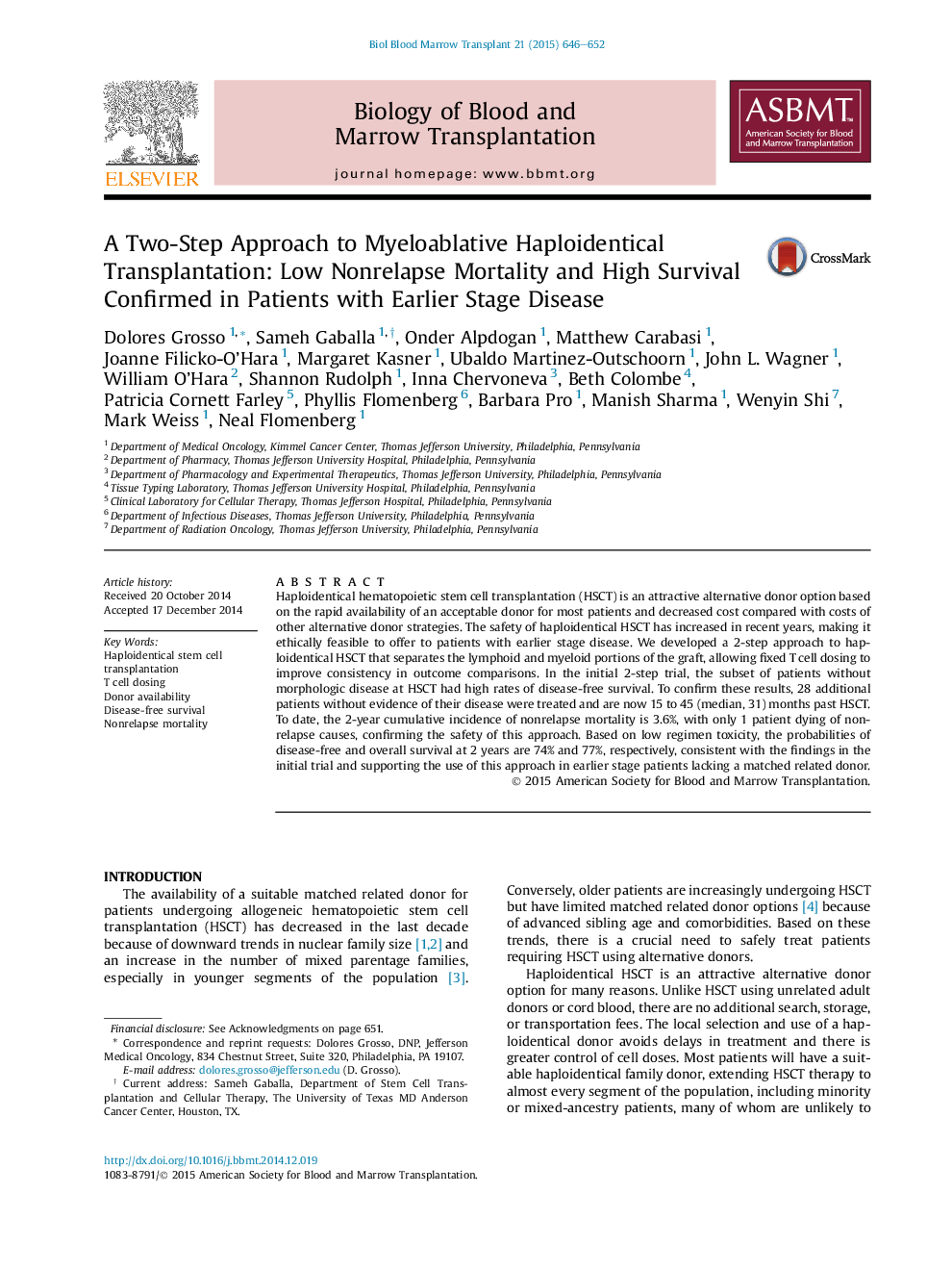| کد مقاله | کد نشریه | سال انتشار | مقاله انگلیسی | نسخه تمام متن |
|---|---|---|---|---|
| 2101446 | 1546268 | 2015 | 7 صفحه PDF | دانلود رایگان |
• Societal trends favor a decrease in availability of fully matched related donors
• The use of a haploidentical donor extends transplantation therapy to more patients
• A 2-step haploidentical regimen was safe and effective in patients in remission
• We confirm these outcomes in a larger subset of patients
• Haploidentical transplantation can be offered to patients early in their disease course
Haploidentical hematopoietic stem cell transplantation (HSCT) is an attractive alternative donor option based on the rapid availability of an acceptable donor for most patients and decreased cost compared with costs of other alternative donor strategies. The safety of haploidentical HSCT has increased in recent years, making it ethically feasible to offer to patients with earlier stage disease. We developed a 2-step approach to haploidentical HSCT that separates the lymphoid and myeloid portions of the graft, allowing fixed T cell dosing to improve consistency in outcome comparisons. In the initial 2-step trial, the subset of patients without morphologic disease at HSCT had high rates of disease-free survival. To confirm these results, 28 additional patients without evidence of their disease were treated and are now 15 to 45 (median, 31) months past HSCT. To date, the 2-year cumulative incidence of nonrelapse mortality is 3.6%, with only 1 patient dying of nonrelapse causes, confirming the safety of this approach. Based on low regimen toxicity, the probabilities of disease-free and overall survival at 2 years are 74% and 77%, respectively, consistent with the findings in the initial trial and supporting the use of this approach in earlier stage patients lacking a matched related donor.
Journal: - Volume 21, Issue 4, April 2015, Pages 646–652
